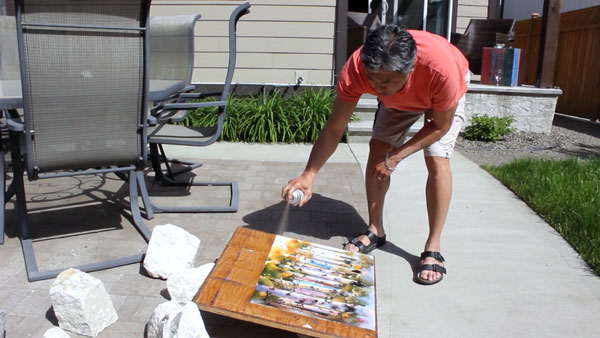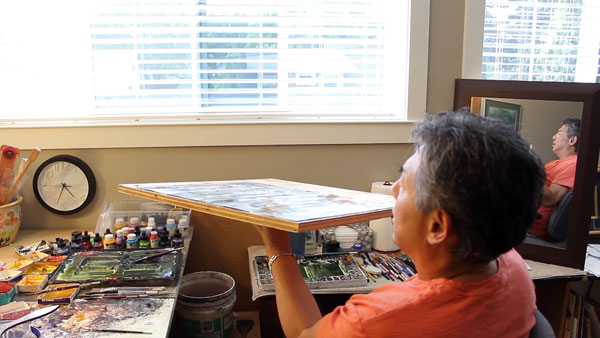Waking up the Paint with Alex Fong
Alex Fong is a Kelowna based watermedia artist whose playful paintings stir the imagination with a kaleidoscope of light and colour. He is a staple amongst the artists in the Okanagan – known for his whimsical paintings, contributions to the Valley’s wine industry, and charitable organizations. Alex is also a frequent visiting artist at Opus, conducting demonstrations primarily at Opus Kelowna.
We paid a visit to Alex’s home studio to discuss his life as an artist and how he pushes the boundaries of watercolour by mixing in liquid acrylics and inks. Let his openness to experimentation inspire you to break through your preconceptions and follow his lead down new paths to your own new artistic destination!
Be pulled into Alex’s vision of the world by watching Waking up the Paint above and discover his process for varnishing watermedia paintings below.
Interested in some of the products Alex uses?
Winsor & Newton Professional Water Colours
Daniel Smith Extra Fine Watercolors
Da Vinci Watercolors
Golden Artist Fluid Acrylics
FW Pearlescent Liquid Acrylic Inks
FW Acrylic Ink
Liquitex Professional Soft Body Acrylics
Opus Allegro Brushes
Hake Brush
Golden Archival Spray Varnish
Golden Polymer Varnish
Wood panel for mounting watercolour paper – we suggest the Opus Paper Stretcher
Varnishing Watermedia Paintings
Traditionally, watercolours are framed under glass for protection and presence. However, with the advent of acrylics and liquid varnish, you can take your watercolours to new depths!
Alex chooses to varnish his watercolour paintings because he uses a mix of watercolour, liquid acrylics and inks. For him, the varnishing process is an alternative to glass in terms of protection, and it also helps to enhance and bring out the colours of his paintings. If you use a gloss varnish, it will give your watercolours a glossy sheen that may not be achievable without it.
Inspired to try varnishing your watermedia paintings like Alex? It’s a simple, two-step process:
Step 1. Isolation Coat
Begin by applying spray varnish on your completed watercolour painting to create an isolation coat. This will seal the absorbent surface without the danger of bleeding or streaking of your watercolours. It also helps to protect the artwork should you wish to remove the subsequent layers of varnish at a later date.

Alex uses Golden Archival Spray Varnish to seal his watercolour paintings. He applies 3 thin layers in even sprays to ensure proper coverage, and recommends that you do this in a well-ventilated area – ideally outdoors. Once the isolation coat is applied, allow the varnish to dry completely before moving on to step 2.
Please Note: Alex suggests using extra caution when applying spray varnish to inks, like FW Acrylic Ink, because it has a tendency to blossom on the paper.
Step 2. Liquid Varnish
Using a soft bristle brush, apply the liquid varnish in straight vertical strokes to cover the entire painting. Alex uses Golden Polymer Varnish for all of his paintings because it has UV protection – ideal for archivability.

Hold the painting up to the light and check for any areas that may have been missed. This is also a good time to check for and remove any stray hairs that may have come off the brush. Let the painting sit overnight, or until dry, and you’re done!

If you’d like further information, GOLDEN’s website offers three options on how to varnish watercolours, along with some excellent technical information.
